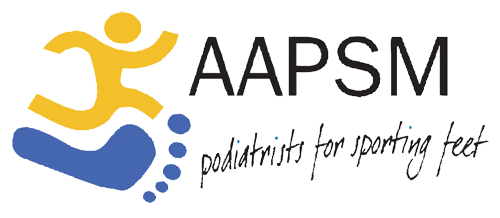Foot and Heel Pain Treatment
Poor foot posture and function is a major cause of foot and heel pain. Shin and calf pain, as well as many knee, hip and lower back problems, may also stem from the feet.
Foot and Heel Pain Causes
People involved in sports and physical activity, and those who spend long hours on their feet may be more prone to injuries arising from poor foot and lower limb function due to overuse.
After a thorough clinical assessment, including muscle range of motion testing, gait analysis, and a footwear assessment, the Gold Coast Foot Centres’ podiatrists will identify specific factors that are contributing to an individual’s problem.
Foot and Heel Pain Treatment
The Podiatrists at Gold Coast Foot Centres use a tailored, multidimensional treatment program to obtain optimal results, individual treatment programmes may include:
Stretching and strengthening exercise programs
Taping and padding techniques
Specific footwear model recommendations
Footwear modifications
Prescription of custom-made foot orthotics
Changes to daily activities/training regimens
Bracing/Splints
Running programs
Running technique
Heel Pain
Heel pain is an extremely common and painful foot condition effecting the heel and arch of your feet, which is commonly referred to as Plantar Fasciitis or Heel Spurs.
The plantar fascia is a soft tissue structure extending from the ball of your foot to its insertion into the underside of your heel, or calcaneus.
Heel pain can affect people of all ages, but is more likely to develop in those who are middle-aged or older, participate in certain high-intensity sports or activities that place increased stress and impact on the feet, have a ‘Flat Foot’ or a ‘High Arch’, are overweight or pregnant (thereby placing too much pressure on the back of the heel), work long hours on their feet, or are overweight.
People with plantar heel pain often feel pain when they get out of bed or after a period of rest.
The pain may go away when they are busy, but it may come back at the end of the day or after exercise.
At the Gold Coast Foot Centres, our podiatrists are here to help. Fortunately, plantar heel pain responds to treatment, and our experienced podiatrists will provide a tailored program to suit your needs.
Treatment may include a muscle stretching and strengthening program, tendon loading exercises, footwear advice, functional customised Orthotics, Extracorporeal Shock Wave Therapy or a combination of one or more treatment modalities.
Contact us today to book.
What is Plantar Fasciitis?
One of the most common causes of foot and heel pain, plantar fasciitis, is inflammation of the thick tissue that connects the heel bones to the ball of the foot and toes.
Often most noticeable in the morning after waking or after sitting for a prolonged period of time, plantar fasciitis can occur in some patients with past injuries, abnormal foot structures, or repetitive lifestyle causes or after increased activity and strain.
(See more on the common causes of heel pain below.)
With proper medical treatment, patients who develop heel pain can often find relief through the help of physical therapy, shoe orthotics, and pain management.
Only in very rare cases is surgery a solution to ongoing heel pain, but may be suggested as a course of action if the pain is affecting day-to-day activities and does not respond to other treatments.
What Symptoms of Plantar Fasciitis Commonly Occur?
The most common symptoms of plantar fasciitis are recurring pain on the bottom of the foot near the heel (often described as a sharp, stabbing pain) and increased pain in the morning after waking or after exercise.
If left untreated, small tears can cause increased pain and worsen inflammation, resulting in longer bouts of irritation and pain.
Common Causes of Heel Bone and Plantar Fasciitis Pain
A common disorder among those who work on their feet and highly active people, the most likely causes of heel pain include:
Foot Structure and Mechanics
Abnormal foot structures and mechanics. From flat feet to high arches, some foot mechanics that deviate from normal structures can make pain worse or increase the risk of chronic pain.
Lifestyle
Highly active lifestyle or occupations that require working on your feet and repetitive stress.
Footwear
Poor fitting footwear. If you work on hard surfaces all day, work out for long periods, or cram your feet into poor-fitting shoes, you run the risk of a number of foot problems–least of all plantar fasciitis.
From ingrown toenails to bunions and blisters, poor-fitting footwear can cause a host of problems that will last a lot longer than the several hours spent in your shoes.
Speak to a podiatrist if you have questions about specialty footwear or what is most supportive if you spend long hours on your feet.
Medical Conditions
Some medical conditions, including obesity and excess body weight, can cause increased strain on the feet, heels, and tendons.
Age
Most patients who suffer from plantar fasciitis are between the ages of 40 and 60.
Activity and Exercise
Exercises and activities known to place increased strain on the heel and foot, including long-distance running and high intensity interval training, can increase the risk of plantar fasciitis in athletes.
Chronic Plantar Fasciitis and At-Home Treatment FAQs
-
In short, heel bone pain is pretty painful.
We commonly hear our patients describe plantar fasciitis as a stabbing, localised pain, and others mention a burning sensation.
Worse still, some patients will mention a radiating pain that can develop as severe heel pain, radiate through the arch of the foot, or up into the Achilles tendon and calf muscles.
Shy of obvious injury, if you’re having specific, sharp stabbing pain in your heel or under the arch of your foot, we recommend speaking to a medical professional and minimising activities or how often you’re on your feet if the pain is getting worse.
-
First things first, we always recommend speaking with a qualified medical professional to ensure that the cause of your heel bone pain is plantar fasciitis and not due to a potential injury or other medical condition.
If you’re struggling with chronic heel pain, improper footwear, foot structure and mechanics, or other health-related conditions like obesity could be causing repeated bouts of inflammation.
The root causes of these can be addressed to help manage your pain.
Otherwise, it’s important to know that heel pain is often caused by inflammation of the tendon that connects the heel to the ball of the foot and toes.
Rest, elevation, and ice are great at-home treatments for inflammation, swelling, and pain management.
-
If you haven’t had your heel pain diagnosed but have tight calf muscles, a stabbing achilles tendon, or you experience heel pain as a source of recurring discomfort in your life, we recommend speaking with a specialist to receive a proper diagnosis.
If you’re suffering from a confirmed case of plantar fasciitis and your first at-home steps to improve your condition are not showing the results you hoped for, we recommend speaking to a professional.
Furthermore, signs of increased swelling, redness, bruising, or significantly increased plantar fascia pain all warrant a quick trip to a medical team to make sure further tendon breakdown hasn’t occurred or you’re dealing with a related injury such as achilles tendinitis, bone spurs, or a stress fracture.
-
Not really. Plantar fascia refers to the connective tissue and tendon that runs underneath the foot connecting the heel to the ball of the foot and toes.
Plantar fasciitis refers to the inflammation of the same thick, connective tissues--and it’s this inflammation that causes plantar fasciitis pain.
Managing Heel Pain and How Often Plantar Fasciitis Occurs
A pain in the foot, plantar fasciitis doesn’t have to be a daily source of discomfort.
If you’re noticing increased heel bone pain or want to get back to your daily routine, speak with the team at Gold Coast Foot Centres to learn more about personalised recommendations to prevent heel pain.
From orthotic inserts and wearing supportive shoes to physical therapy exercises and rehabilitation, we can help you reduce pain, get back on your feet, and start moving today.





